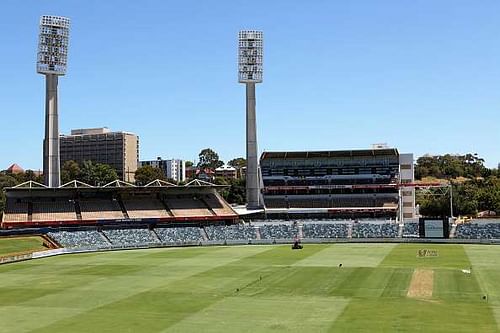
SK Glossary: The fastest pitch in the world
The outcome of any cricket match depends on the quality of bowling, batting and fielding. But equally important parameter besides these factors is the pitch and weather conditions. It is often we hear the commentators say phrases like “The ball is coming onto the bat” or “The bounce and carry he is getting off this wicket”. These phrases represent the conditions (the pitch and weather conditions), how bouncy it is, whether the ball skids on it's surface, the amount of grass on it, etc. In short, the 'pitch factor' impacts the result of a cricket match to a large extent.
Fast, bouncy pitches are one of the deadliest to play on. These types are most common Down-Under and in South Africa. This is why teams from the subcontinent, who are mostly accustomed to slow, turning tracks, find it difficult to adjust their batting style and score runs. These pitches, however, are useful to batsmen who can play the pull shots, hooks and cut shots well (basically all shots played with the bat horizontal to the ground). So success for sub-continent teams in these pitches is not seen very often.
So which is the fastest pitch in the world?
Pitches at the Adelaide Oval, Oval (in England), Sydney Cricket Ground, Wanderers (in South Africa), Gabba (in Australia), Sabina Park ( in Jamaica), Kingsmead (in South Africa), MCG and Kensington Oval (in Barbados) are all notoriously fast and deadly. But the one pitch that stands out is at the WACA in Perth, Australia.
The W.A.C.A, as the ground is called, is also home to the Perth Scorchers, the two-time Big Bash League winners, and one can easily guess as to how the team derived its name. The ground is branded “The Furnace”. The pitch at the WACA is regarded as the quickest and bounciest in the world. These characteristics, in combination with the afternoon sea-breezes (the Fremantle Doctor), have historically made the ground an attractive place for pace and swing bowlers.
History of the WACA
The W.A.C.A was established in 1880 and since then the lightning quick pitch has assisted fast bowlers throughout. In October 1967, Western Australia's Ian Brayshaw collected 10 for 44 against Victoria, the second best bowling figures in an innings in the Sheffield Shield history. In the semi-final of the 1976/77 Gillette Cup domestic one-day competition, which became known as the "Miracle Match", Western Australia was bowled out by Queensland for 77, before dismissing Queensland for 62 to win the match.
Memorable International Encounters
In a test against the West Indies in 1988/1989, former Australian speedster Merv Hughes took a hat-trick and went on to take 8–87 in the innings. He ended up with 13–217 for the match, the most wickets taken at the ground in a Test match. In the same Test, Australian tail-end batsman Geoff Lawson had his jaw broken by a Curtly Ambrose bouncer.
On 30 January 1993, Curtly Ambrose had a stunning spell of 7–1 (eventually 7/25) as Australia crashed from 3–85 to 119 all out.
On 1 December 2000, Australia's Glenn McGrath took a Test hat-trick, dismissing the West Indian batsmen Sherwin Campbell, Brian Lara, and captain Jimmy Adams, taking his 300th Test wicket in the process (which was incidentally Brian Lara). In 2004, at the age of 34, Glenn McGrath took eight wickets for 24 runs against Pakistan, his best Test bowling figures, and the best ever Test bowling figures at the WACA.
South Africa defeated Australia by six wickets in a Test match in December 2008, but Australian fast bowler Mitchell Johnson became the first left-arm paceman to take eight wickets in a Test innings with figures of 8/61 in South Africa's first innings.
Is it a graveyard for batsmen?
Over the years, this has been a pitch dreaded by batsmen and relished by fast bowlers. However, the outfield being exceptionally fast contributes to the ground seeing some very fast scoring rates – as of February 2016, four of the nine fastest Test centuries have been scored at the WACA.
